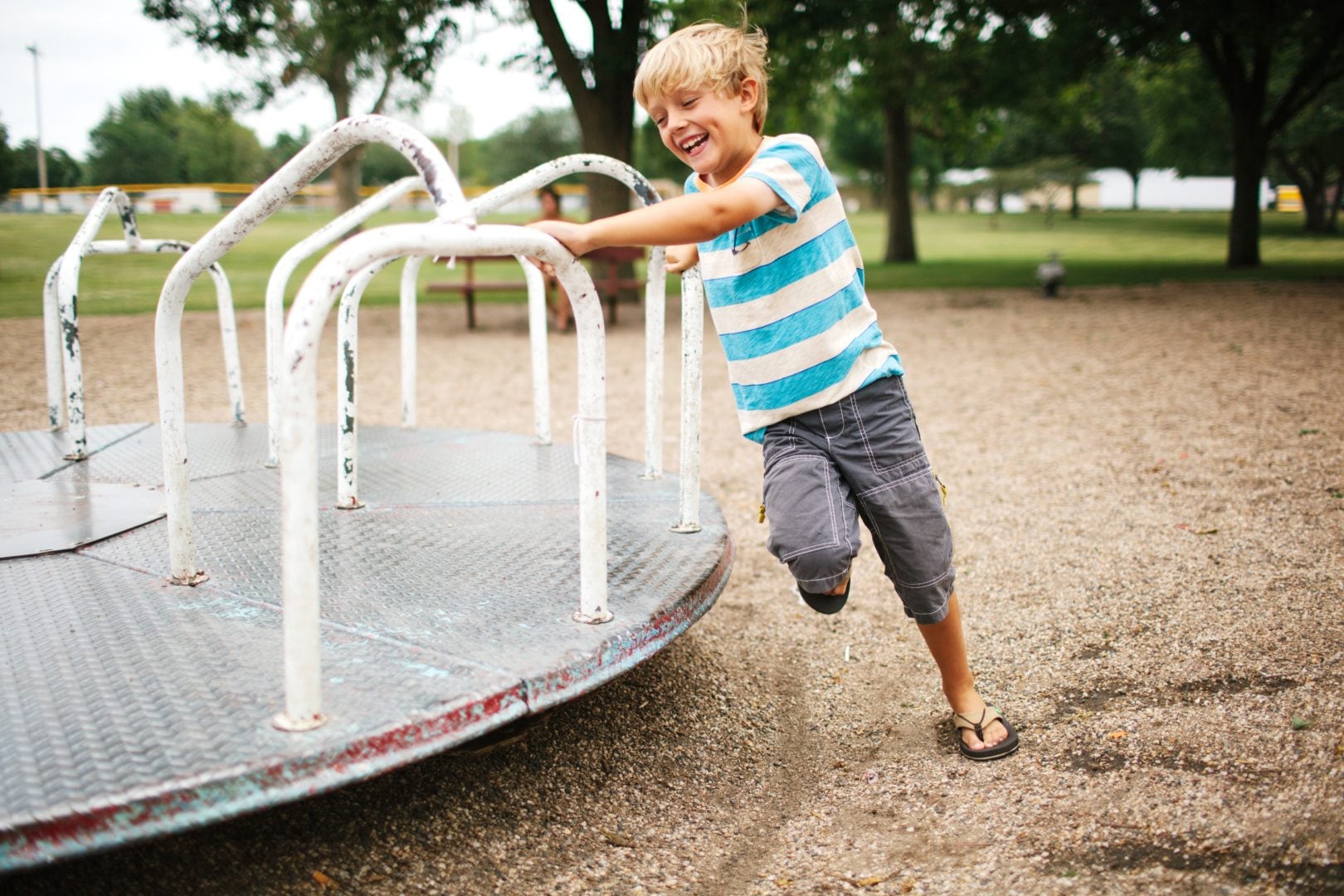From team sports to a friendly neighborhood game of tag, there are many benefits that come from kids playing outside. However, most parents will argue that the benefits that matter the most are the ones that affect their child’s physical and mental health.
We asked Alyssa Ross, from KaBOOM, Debi Huang, a mom and writer behind the Go Explore Nature blog and Lindsay Legendre, from the Natural Wildlife Federations Be Out There movement, to give us the low-down on five of the most important physical and mental health benefits of kids doing outdoor activities.
1. Improves vision
A study published by the American Academy of Ophthalmology found that kids who spend time playing outside are at a reduced risk of developing “myopia,” or nearsightedness. The team of researchers found that a child’s chances of developing myopia dropped by two percent for each additional hour spent outdoors, per week. The study concluded that getting kids to spend more time outdoors could be a “simple strategy” to reduce the progression and development of nearsightedness in children.
2. Promotes social skills
Ross believes that getting kids to play outside — and, specifically, engaging in unstructured play — promotes a wide range of skills:
“On a playground, not everyone gets to go down the slide first,” Ross says. “Going to a playground with your kids is not just about running around and being active, but it’s also about learning social skills, executive functions and behavioral skills as well through play.”
In fact, the University of Missouri-Kansas’ School of Education found that outdoor play has many brain-boosting benefits for kids, starting in infancy. The paper explains that outside play fosters “social, emotional, and cognitive competencies” in kids, including strengthening the language and communication interactions between young children who play together at the park.
3. Increases attention span
Huang notices the benefits of playing outside with her own kids
“The difference I see is both of my children have a high attention span comparatively speaking, and are much more self-directed (they want to investigate things), where other kids might just sit back,” Huang says.
An estimated 6.4 million children between the ages of 4 and 17 have Attention Deficit Hyperactivity Disorder (ADHD), according to the Centers for Disease Control and Prevention. Studies have shown that green outdoor settings appear to reduce ADHD symptoms in children, which includes the exposure they get to natural settings like parks and beaches through weekend and after-school activities. Overall, it’s becoming increasingly more apparent that these types of outdoor activities may be widely effective in reducing attention deficit symptoms in children.
4. Reduces stress
When it comes to stress, Legendre tends to rely on natural remedies: “Spending time outside playing is such a huge outlet for stress. It’s relaxing; it is healing,” she said.
And there’s data to back this up. In 2014, researchers from the University of Colorado teamed up with educators from Maryland and Colorado to study the effects that green schoolyards had on children’s stress levels and resilience. They made the argument that increasing children’s exposure to green outdoor spaces (e.g., lush playgrounds) could help decrease children’s’ stress levels by offering them an escape from life’s daily routine. The study said that kids who play outside found “peace away from stresses in the classroom and daily life.”
5. Increases vitamin D levels
The American Academy of Pediatrics says that vitamin D offers us several health benefits, such as strengthening bone health and helping to prevent diabetes and heart disease. In order to stave off vitamin D deficiencies in children, the Cleveland Clinic strongly urges parents and child care providers to make sure that their kids receive a healthy dose of the nutrient starting at birth. There are vitamin D supplements that you can take, but you can also get it through a free and natural version: sunlight.
Allow your kids to play outside for a few minutes without sunscreen. (Although sunscreen is extremely useful for blocking out harmful ultraviolet rays that can cause cancer, it also prevents vitamin D from getting absorbed into the skin.) Then, slather on the lotion.
Of course, if your child burns easily, you should absolutely use the sunscreen — just make sure to increase your child’s intake of vitamin D-heavy foods and supplements. Consult your pediatrician to find the best option for your child.






